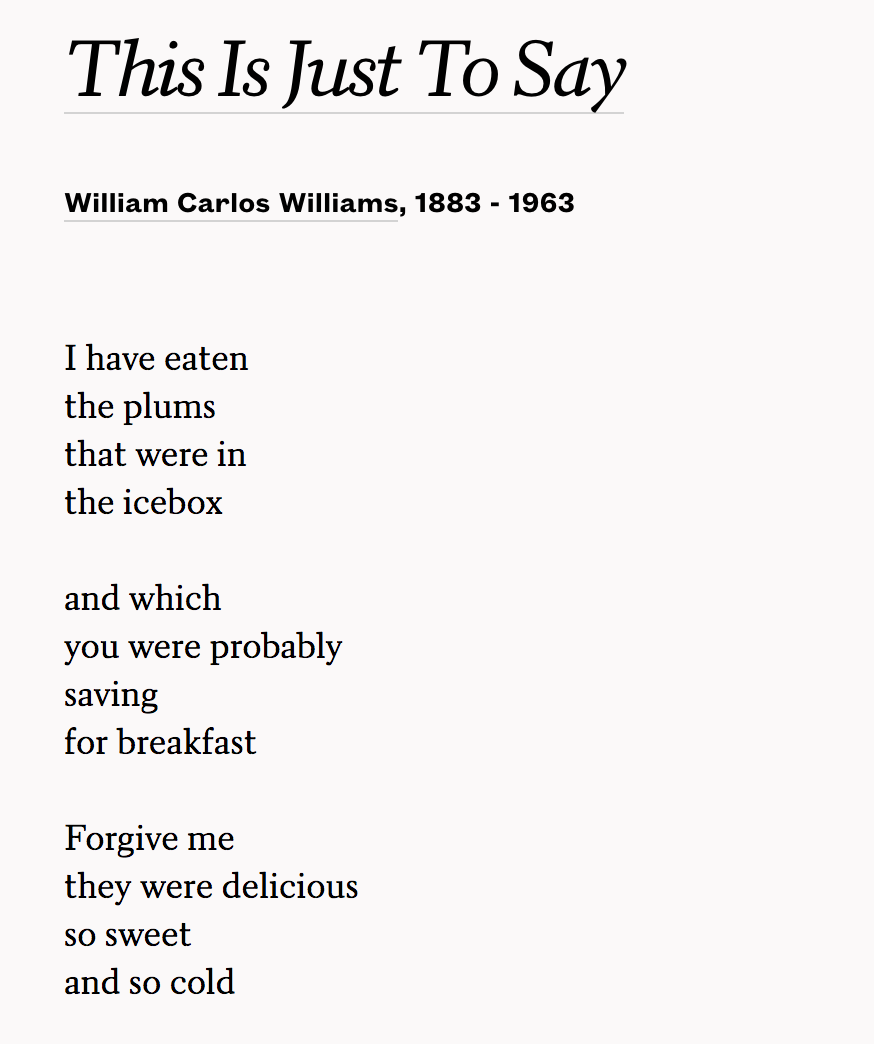After last week’s Physical Computing class, we were challenged to construct a circuit with a “creative switch” for homework. We had gone over series circuits in class, and Danny showed us a few simple switches. My favorite was his impromptu “wind sensor”, which required the user to blow across a sheet of aluminum foil that then came in contact with a conductive wire that closed his circuit (and lit up an LED).
For my creative switch, I wanted to force myself to use the simplest components possible. I decided to keep the same basic circuit we built in class (a power source, an LED, a 220 ohm resistor, and switch in series), and focus my energies on making the switch something interesting.
I came up the following design:
The design was inspired, in part, by a certain poem that has gained a surprising amount of popularity on Twitter:

The point is to be alerted when someone has eaten your plums and your icebox has become quite empty. I imagined a future, more terrible iteration of this design that might include tweeting variations of the William Carlos Williams poem each time icebox in question was pillaged.
Soon after I sent out to prototype it, the design shifted to accomodate for available materials.
I grabbed some cardboard and a battery case from the junk shelf. I knew I needed some sort of platform to place my hypothetical plums, and that it would need to move up and down. With the help of the shop staff (thank you, Alden!) and borrowed wire cutters, I was able to grab the springs from the battery case for my platform.
I attached two metal springs to the bottom cardboard panel of my contraption.
I noticed that the springs were quite strong, so rather than attaching two more springs in the remaining corners, I folded up a bit of cardboard (barely half an inch thick) accordion-style to mimic the metal springs, with considerably less strength. I then attached a panel of cardboard on top of those springs and bits of cardboard. When the glue dried, I had a platform that flattened when pressure or weight was applied, and then bounced back to a starting height when the pressure or weight was removed.
I also added a narrow but tall strip of cardboard perpendicular to my platform. I added copper take to this strip, taking care to make sure that the copper right at the starting height of the platform. I added the take copper tape to the edge of that platform that would come in contact with the perpendicular strip. Ideally, we would want the copper of the platform to come in contact with the copper of the strip when an object was removed from the platform, and an alarm or indicator needed to be set off (i.e. the circuit needed to be closed).
I added this basic switch into our basic LED-resistor-in-series circuit. (Hopefully, you can better see how contact involving the copper tape works in the image below).
I ended up staying with an LED after briefly considering a buzzer in its stead. (There were lots of other people quietly working, and I didn’t want to alienate new potential friends!)
In its finished stages, it seemed the springs were too strong to be much moved by fruits. I ended up placing heavy books on it, in order to make it work. In the future, if I were truly going to use this for an at-risk icebox, I would probably use weaker springs.
I do want to point out that the use of this device is not limited to theft detection. It can also alert someone that the quantity of some frequently consumed thing has diminished, and that it is time to restock (e.g. a baker’s flour supply).







